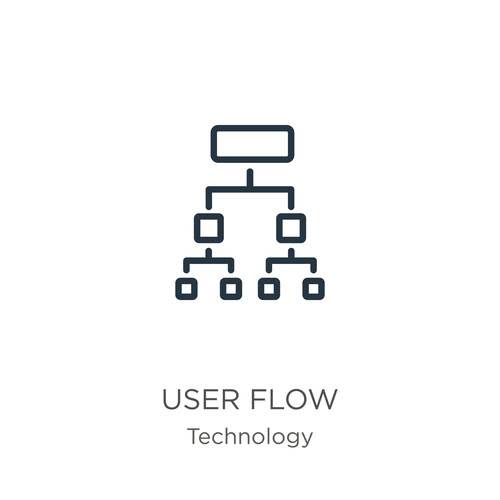You can use Azure DevOps pipelines by first creating a new pipeline through the Azure DevOps portal, then defining your pipeline in a YAML file or using the classic editor. You’ll need to connect your code repository, select a template (or define your steps manually), and then run the pipeline to build and deploy your https://www.globalcloudteam.com/azure-devops-services-what-is-it-and-when-does-your-business-need/ code. A CI/CD pipeline is used to automate the process of continuous integration and continuous deployment. The pipeline facilitates the software delivery process via stages like Build, Test, Merge, and Deploy. In some organizations, the build pipeline may also be called the Continuous Integration (CI) pipeline.
Azure Pipelines allow you to automatically run builds, perform tests and deploy code (release) to various development and production environments. But what if you’ve never heard of Azure DevOps or a pipeline before or have never built one with Azure DevOps? Finally, search for Publish Build Artifact task in Show Assistant, give the Artifact a name, then click on Add. Congrats, you completed the build pipeline for your automation project.
Resources for AWS
Azure Pipelines empowers developers to focus on building code while the automation takes care of deployment tasks like file uploads. Many teams prefer to define their build and release pipelines using YAML (YAML Ain’t Markup Language). This allows them to access the same pipeline features as those using the visual designer, but with a markup file that can be managed like any other source file. YAML build definitions can be added to a project by simply adding their source file to the root of the repository. Azure DevOps also provides default templates for popular project types, as well as a YAML designer to simplify the process of defining build and release tasks.
It is reliable and backed by a 99.9% SLA and 24×7 support. The development roadmap for Azure DevOps is published publically for full transparency so you can get full visibility of the new features coming soon. From the template list on https://www.globalcloudteam.com/ the right, select Azure App Service Deployment. You’ll see many different kinds of templates available to save time creating future release pipelines. At this point, you will be at the Review phase of the pipeline creation process.
Setting Up Azure App Services
The CURL command will loop through the list for activation. Adding a trigger parameter helps to instruct the pipeline for its execution. For example, the below screenshot shares the snippet of the pipeline where the OIC pipeline will be auto-triggered whenever a .

The Azure DevOps platform contains a sidebar with available services, such as Boards, Repos, Pipelines, Test Plans and Artifacts. Clicking on Repos opens the repository management functionality to manage code, branches, pull requests and other features. Follow this tutorial to get started with Azure Repos and use it alongside a pipeline to build a container image. A next generation CI/CD platform designed for cloud-native applications, offering dynamic builds, progressive delivery, and much more. If you define the same variable with the same name in multiple places, the variable with the largest local scope takes precedence. Thus, variables defined at the task level can override variables set at the step level.
Set Up the Deployment Pipeline in Staging
Notice that the dependency lines show that both staging and production will run at the same time after the build stage has completed? Instead, let’s make sure that the production stage has all the proper dependencies and commit the code. For this part of the pipeline, we will go ahead and put all these steps in a single stage and a single job. Multiple jobs will allow you to run those groups of steps in parallel which isn’t necessary here – all the steps are dependent on the previous step.
Variables defined at the stage level override variables set at the pipeline root level. Variables set at the pipeline root level override variables set in the Pipeline Settings UI. Repos provides Git repositories for you to store and version control your code. You can also use Team Foundation Version Control (TFVC). In this section, let’s cover how to add artifacts to the release pipeline.
Commit the code and execute CI/CD
Once the build has completed, you are greeted with green checkmarks as you can see below. This screenshot indicates each platform build passed successfully. One of the real benefits of Azure DevOps is the pipeline YAML.
- You will now be presented with a representation of the build pipeline in YAML.
- CI is the modern method employed by software developers to streamline code changes, which facilitates developers to work spontaneously and collaboratively in a more reliable way.
- A task can be used to help developers quickly configure a step.
- For example, Azure Pipelines allows software developers to configure pipelines using YAML files, which is handy and easy to learn.
- If you watched the pipeline run, you would have noticed that the production stage ran immediately after staging.
- With many other DevOps tools, you have to build a pipeline file manually.
In this Project, you’re going to use a release pipeline to publish code in the GitHub repo to an Azure Web App. Now that you have an Azure DevOps organization and project set up, you can now create a build pipeline inside. It’s where you will create builds to perform various tasks like compiling code, bringing in dependencies and more. You have both the build pipeline and release pipeline built now. To test whether the pipeline works, you can commit a code change in your automation process.
Real Time Web Testing
If you’re done testing things out, be sure to remove the original organization created so you don’t risk being charged for any Azure resources. Then, you should be able to see the build pipeline is triggered, which will pack the automation process into a NuGet package and execute the test cases in Orchestrator. After the build pipeline runs successfully, the release pipeline will be triggered spontaneously to deploy the automation process to the destined folder in Orchestrator. Now that we have the UiPath Integration, the next step is to create a new project in which you can build pipelines for your automation process.

It can include files from disparate systems or incorporate previous outputs, both of which can be error-prone, time-consuming manual processes. In short, a pipeline makes building and checking easier. Codefresh is a CI/CD platform that supports Azure and other cloud environments, and is an alternative to Azure DevOps. If I create a release pipeline for Project A, will Devops automatically Release build for other projects «B,C & D» in the same organization at the same time. Pipelines allow you to set up Continuous Integration and Continuous Delivery pipelines (CI/CD) to build and release your applications in an automated fashion. Within a release pipeline, there are many different items that need to be deployed.
Learn About AWS
However, if you need your data to stay within your on-premise organization, you may need to choose the Azure DevOps server version, which would sit within your trusted network. This will take longer to set up and incur management and hosting overheads. You will also need to provision build and deployment servers, meaning more servers and overhead. If you are currently running Team Foundation Server on-premises, Azure DevOps would be a natural upgrade if cloud hosting was out of the question. Artifacts is a package repository allowing teams to share packages such as Maven, npm, and NuGet and integrate these packages into your build pipelines.